Clade Angiosperms Scientific name Myristicaceae Rank Family | ||
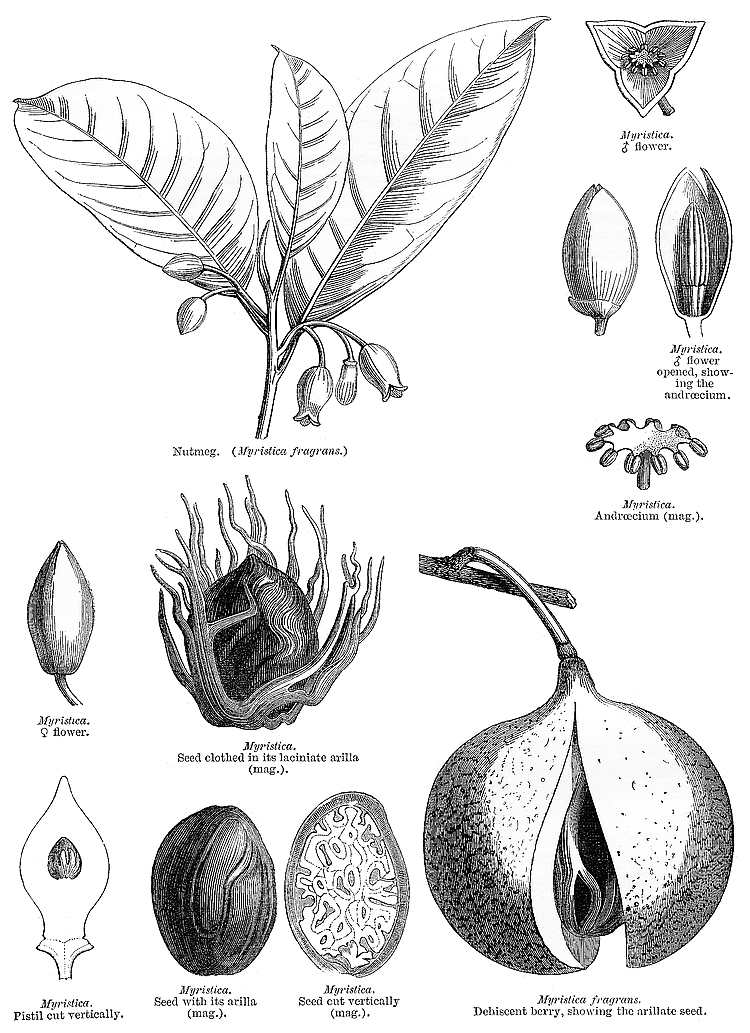 | ||
Lower classifications | ||
The Myristicaceae are a family of flowering plants native to Africa, Asia, Pacific islands, and the Americas and has been recognised by most taxonomists. It is sometimes called the "nutmeg family", after its most famous member, Myristica fragrans, the source of the spices nutmeg and mace. The best known genera are Myristica and Virola.
Contents
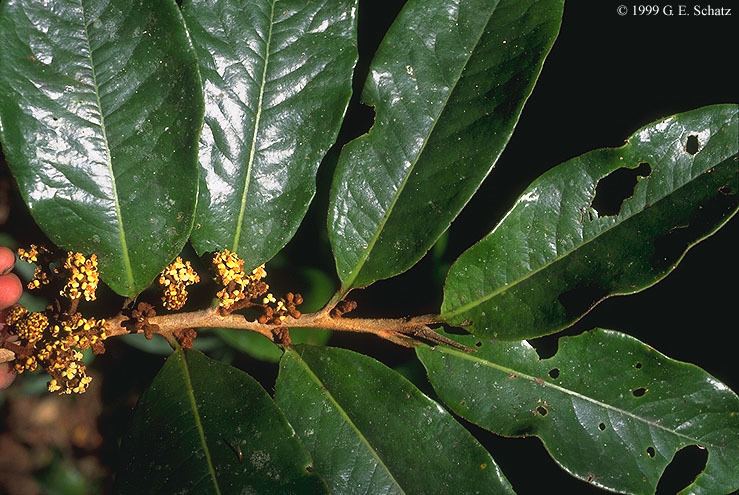
The family consists of about 20 genera, with about 440 species of trees and shrubs found in tropical areas across the world. Most of the species are large trees that are valued in the timber industry.
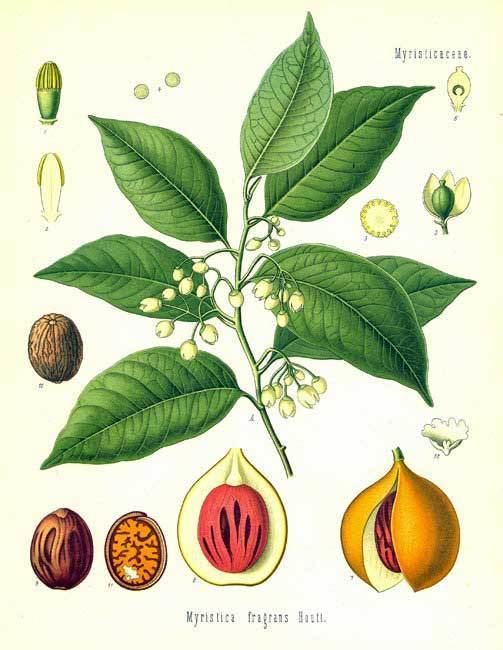
Description
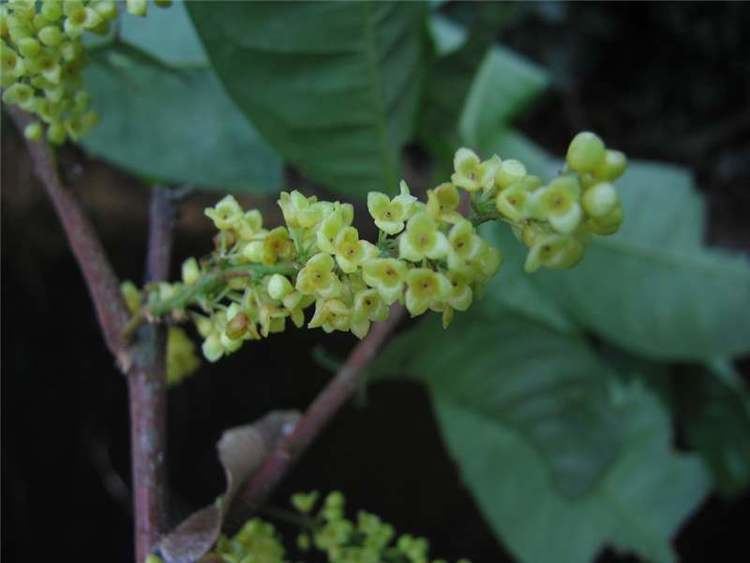
They are typically trees with coloured sap (typically red) and essential oils as irritant or toxic defense mechanisms that repel or poison many herbivorous organisms. The wood is pink to reddish due to the coloring of the sap. When cut, the tree trunk exudes a red or yellow resin. The foliage is generally aromatic and the leaves are glossy, dark green, simple, evergreen, and leathery. The flowers are usually small and feature either only three petals or no petals at all. The flowers cluster and emit a pungent odor. The flowers are typically a greenish, whitish, or yellowish hue. The female flowers have no staminodes. The male flowers lack a gynoecium.

The fruit is fleshy to non-fleshy (leathery), and contains a single seed. The fruits are typically quite large and, in almost all the species, the fruits break spontaneously when mature (dehiscent fruits).
List of genera
As of October 2016, the Angiosperm Phylogeny Website accepted the following genera:
Ecology
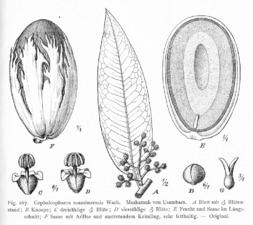
In South America, Myristicaceae grow in humid lowland Amazonian forests, mountain forests, tropical forests and cloud forest regions, at elevations between 100 and 2100 m. Some of the anatomical characters presented by this family suggest that in the past they could live in xeric (dry) environments, but now their species are linked to tropical rainforests.

The species present anthesis at night, and pollination is usually carried out by small beetles from the Anthicidae family that resemble ants and consume pollen (e.g., Myristica fragrans is probably pollinated by the beetle Formicomus braminus). The strong floral scent that attracts beetles emerges from the ends of the connectives of the stamens. However, Myristica is probably pollinated by true ants, a case of myrmecophily.
Uses
The most important products of the family by far are the nutmeg and mace spices, both derived from the seed of Myristica fragrans), a tree native to Malaysia. The hallucinogen (a derivative of tryptamine) inhaled by Amazon Indians from certain tribes is obtained from the bark of Virola elongata and other closely related species. The wood of some Asian and American species has local commercial use, as is the case of Gabon or cuangare bull's blood (Otoba parvifolia) in South America.
Toxicity
Essential oils of Myristicaceae have antifungal action and antimicrobial activity against Streptococcus mutans. The dark-red resin of the tree bark in some genera, such as Virola, contains several hallucinogenic alkaloids. Myristicin poisoning can induce convulsions, palpitations, nausea, eventual dehydration, and generalized body pain. It is also reputed to be a strong deliriant, and some fatal myristicin poisonings in humans have occurred.
Fossil record
A fossil seed of †Myristicacarpum chandlerae from the early Eocene London Clay flora of southern England is the earliest record of Myristicaceae.
